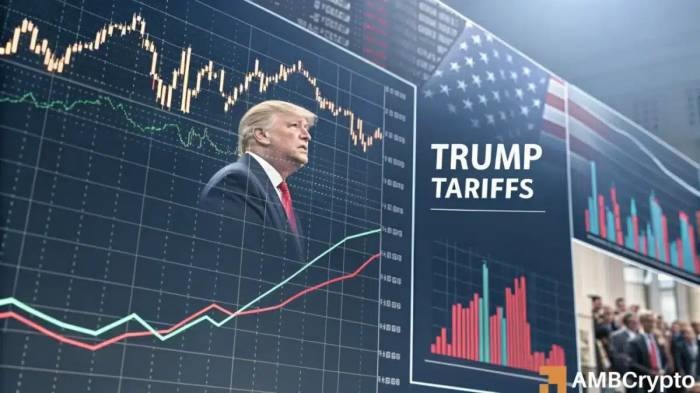
Over the past two weeks, Trump has taken a wrecking ball to the global economy by announcing sweeping tariffs on dozens of countries. This abrupt move sent stock markets in the US and abroad into a tailspin, forcing the administration to quickly backpedal, writes Thomas Fazi, a well-known international observer, focuses on world affairs, government, and politics.
In a hasty retreat, Trump revised the policy to impose a lower, across-the-board 10% tariff (25% for aluminium and steel), while simultaneously singling out China with a staggering 145% tariff on all imports from the country, one of the most extreme trade measures in modern history — though some categories were subsequently exempted.
This aggressive trade policy is underpinned by two main objectives: one official and one unofficial. The official goal is to reindustrialise the US economy by reviving domestic manufacturing and reducing the trade deficit — a goal that is, in itself, legitimate. The unofficial goal, however, is far more troubling: to economically wound China in an attempt to slow or halt its rise as a global power. This fits into a broader, longstanding pattern of US efforts to preserve its global dominance — economically, militarily, and geopolitically — at virtually any cost.
What’s even more alarming is that both objectives are often framed as essential steps in preparing for a future war with China — a scenario that, however outlandish it may seem, is increasingly viewed by elements of the US establishment as not only inevitable, but perhaps even desirable.
Rebalancing the US economy requires confronting the true structural roots of its decline: hyper-financialisation, chronic underinvestment in domestic industry, imperial overstretch and — perhaps most crucially — the global reserve currency status of the US dollar.
Reviving American manufacturing is not merely a matter of tariffs or reshoring policies; it demands relinquishing the dollar’s supremacy and, by extension, the imperial foundations of US power. In essence, it calls for the United States to embrace multipolarity and evolve into a more “normal” nation — a regional power among other regional powers, rather than a guardian of the global economic order — by engaging with other countries, first and foremost China, to manage the transition to a post-dollar-dominated global trading and financial system. Both globally and within the US, this would benefit virtually everyone — except the imperial elites who got the country into this mess in the first place.
Regrettably, this is not the path being pursued by the Trump administration. On the contrary, Trump has repeatedly taken a hostile stance toward BRICS, openly expressing his opposition to the emergence of an alternative reserve currency or a reserve basket. He has made it clear that such talk must end, and that he will do whatever it takes to ensure the US dollar remains the world’s dominant reserve currency, reflecting his ambition for the US to reclaim its position at the top of the global hierarchy. However, this goal is fundamentally incompatible with Trump’s stated aim of reducing the trade deficit.
Yet his administration seems to think the US can have its cake and eat it too — retain the dominant status of the dollar while simultaneously forcing countries to subsidise the reindustrialisation of the US economy.
Clearly, Trump’s tariff policy is about far more than reducing the US trade deficit; it represents a desperate bid to preserve American economic, military and geopolitical dominance at any cost — using economic coercion against nearly every country on the planet and China in particular. It is, in essence, the continuation (or rather the anticipation) of war by other means.
However, it’s a war the US is destined to lose, for several reasons. For starters, the US’s ability to leverage tariffs to exert economic pressure on other countries is much more limited than it used to be: despite its historical role as the world’s “consumer of last resort”, the US today accounts for less than 15 percent of global imports — roughly the same percentage as China, which has emerged as the largest trading partner of over 150 nations. Simply put, the US market is not as important as it once was.
Will the tariffs — and Trump’s full-scale trade war against China — deliver better outcomes for the US in strictly economic terms? This too seems unlikely. Much of what is labeled as “Chinese exports” to the US are, in fact, American products manufactured in China — meaning the lion’s share of the value is captured by US corporations. As a result, it is these very companies that stand to be most harmed by the tariffs.
This is why Trump, likely under strong pressure from US high-tech companies, was quick to announce tariff exemptions for smartphones, computers and other electronic devices imported from China — though he also suggested the exemptions could be short-lived. This underscores a key reality: if Trump is serious about bringing manufacturing back to the US, one of his biggest challenges will be compelling American corporations to take a financial hit in service of broader economic goals. Meanwhile, China’s retaliatory tariffs of 125% on all US goods will inevitably undermine US exports to the country, further hampering the output and profit margins of US corporations.
Thus, in the short term, the US is likely to pay a significantly higher economic price for the trade war with China than China itself.
read more in our Telegram-channel https://t.me/The_International_Affairs

 11:50 27.04.2025 •
11:50 27.04.2025 •






















